Flowers
Information on the flowers we grow on the Farm.
Fun Fact: At Hidden Acres Farms we do not use pesticides or herbicides on our flowers. We don’t use sprays in order to protect pollinators like bees and butterflies. Many people don’t realize that the majority of flowers sold in the United States are imported from foreign countries, which means chemicals banned in the US may have been sprayed on the imported flowers. If you think you are allergic to flowers, you may just be allergic to the chemicals on imported flowers!
Below is a list of some of the flowers we grow on our farm. Our farm is in zone 6a so the last frost in the spring is around April 15, and the first frost in the fall is around November 15. Annuals have to be planted each year; perennials come back year after year.
Allium
Allium, or Ornamental Onion, are very unique perennial flowers. Bulbs are planted in the fall or very early spring and bloom in early May on our Farm. Colors include pink, purple, and white. Allium can be toxic to people and pets.


Bachelor's Buttons
Bachelor’s Buttons are cool annuals that we plant in the fall or late winter for early spring and summer flowers. They take about 7 to 9 weeks to flower after the seeds germinate. The flowers are blue in color. Years ago in Victorian London, young eligible bachelors would wear a blue flower in their buttonhole to let young ladies know that they were unattached, and thus they became known as “Bachelor’s Buttons.”



Bells of Ireland
Bells of Ireland are a cool season annual. Their unique green bell shape has tiny white flowers in the centers. With the hot and humid summers in Missouri, these plants only do well in the cooler temperatures of spring.
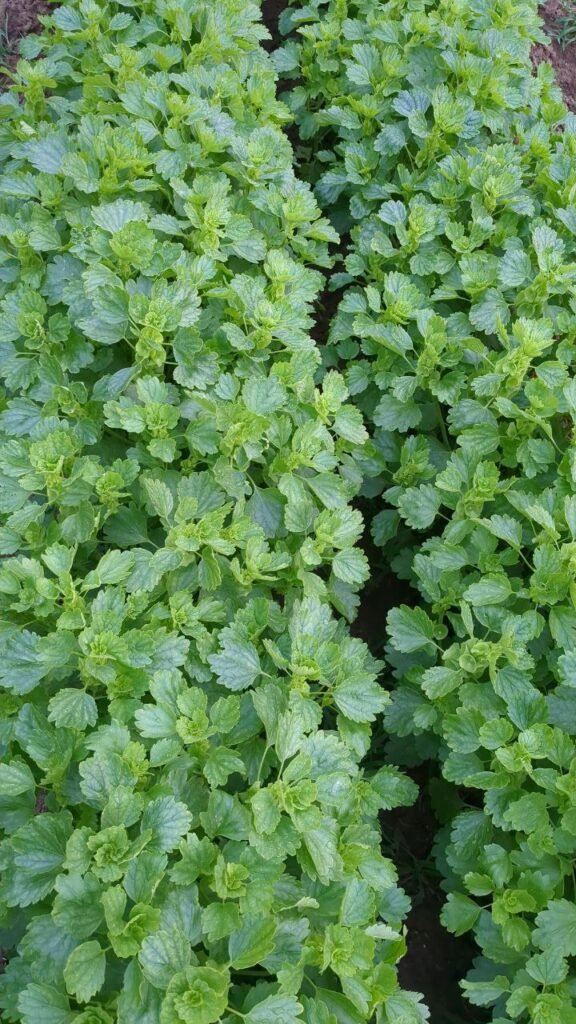
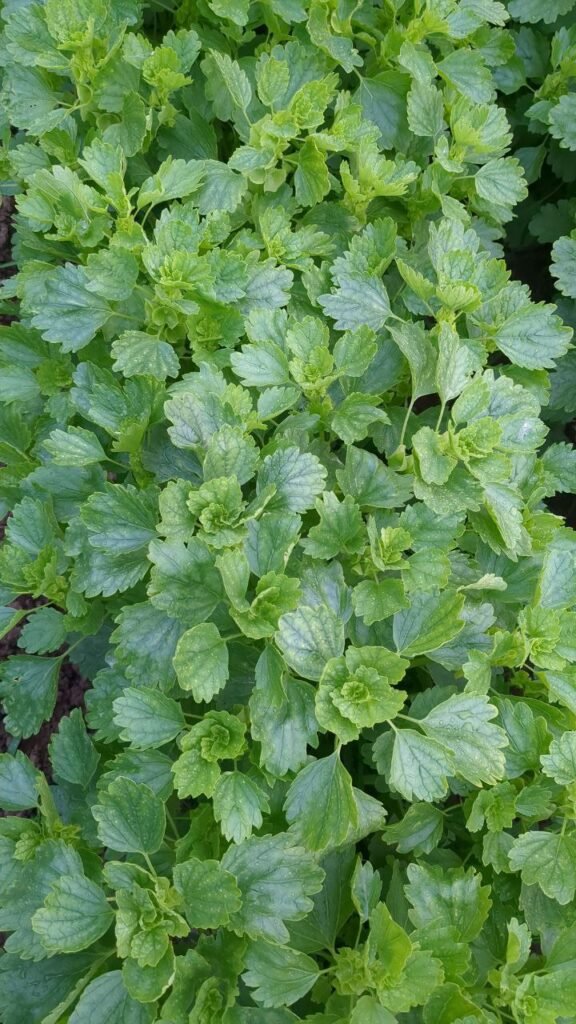
Cosmos
Cosmos are annuals that we plant in early May. They take about 50 to 60 days to flower after the seeds germinate. The flowers are pink, purple, white and red. We succession plant every 3 to 4 weeks.
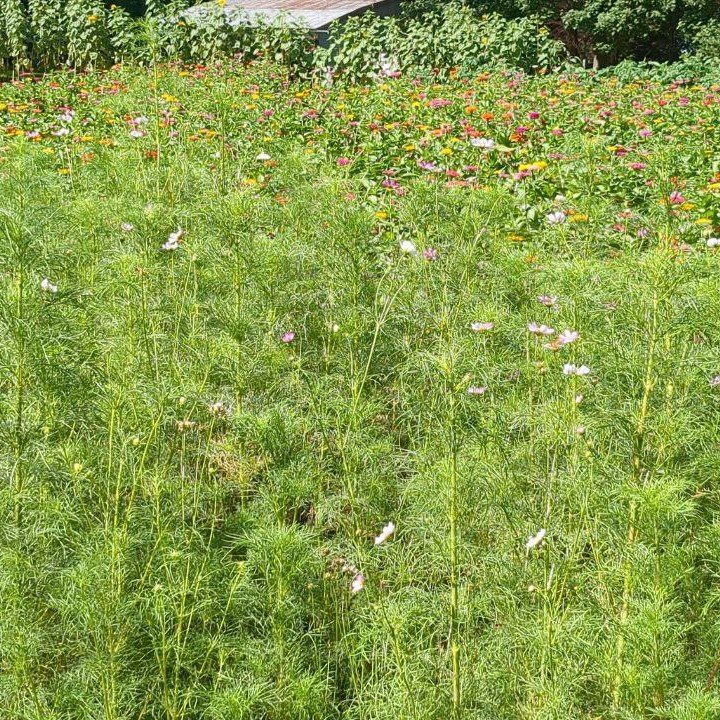
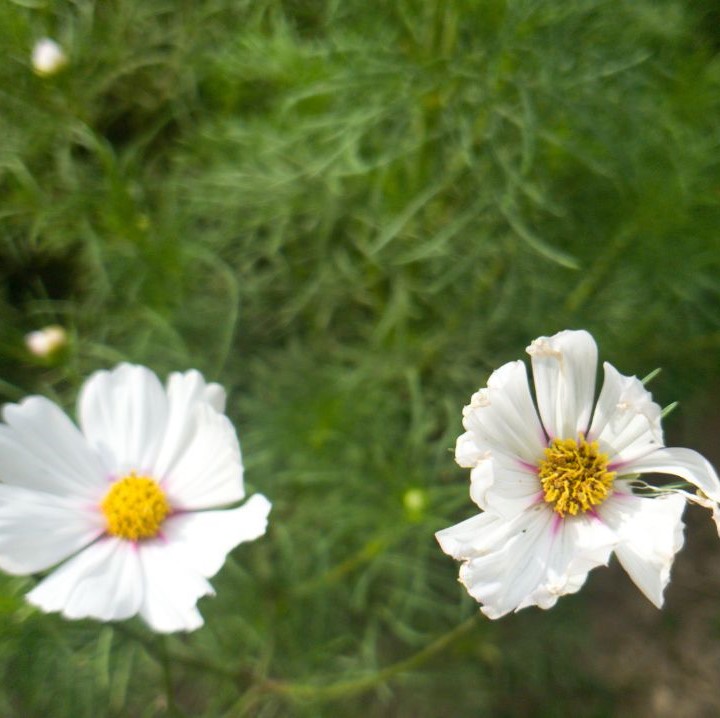
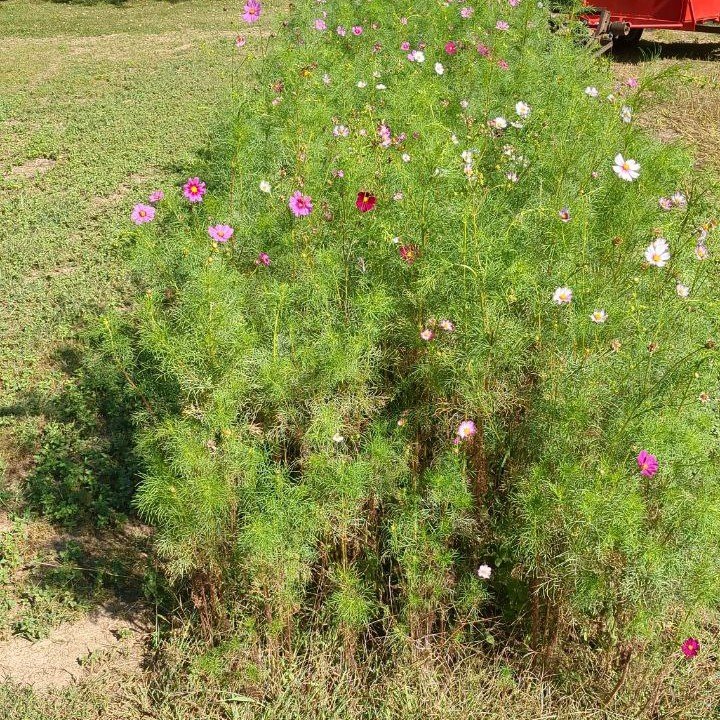
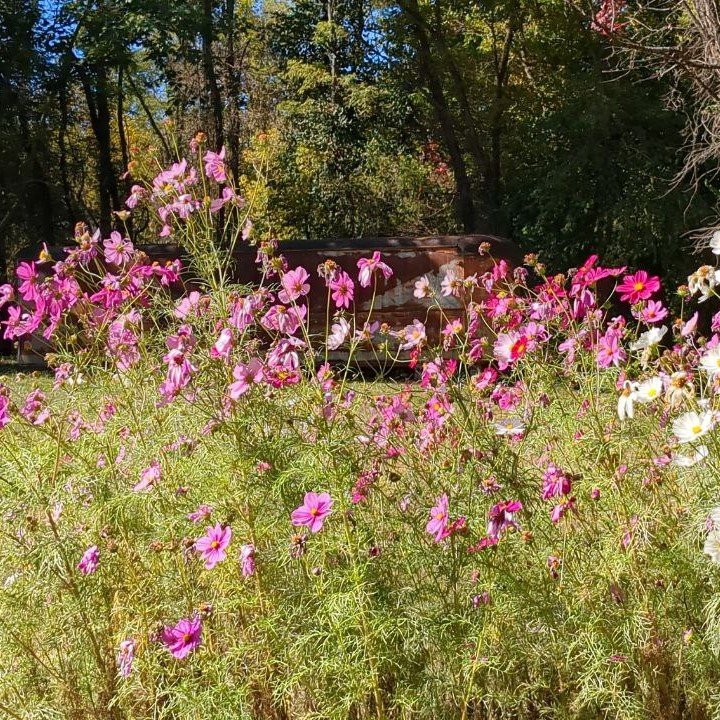
Dahlias
Dahlias are grown from tubers that we plant in the spring and then dig up in the fall, as they won’t tolerate our cold mid-western winters. Dahlias are one of the most popular flowers available. Dahlias are the national flower of Mexico.

Liatris (Blazing Star)
Liatris, or Blazing Star, is a native prairie plant in North America. It has a very unique shape and is great for attracting pollinators like bees, moths and butterflies.
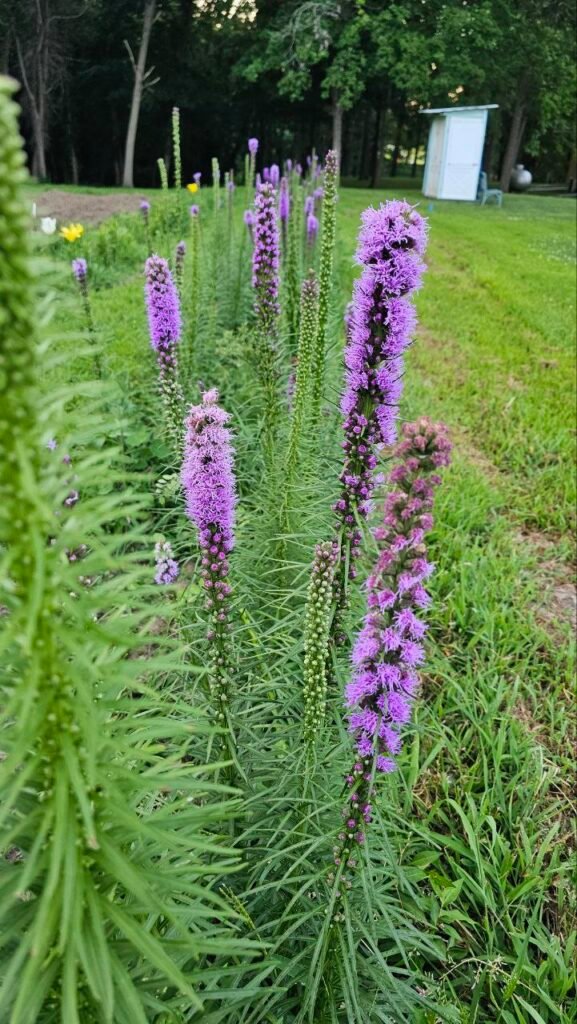


Lilacs
Lilacs are flowering woody shrubs that bloom in April and May on our Farm. Their sweet fragrance is an unmistakable indicator of spring.


Lilies
Asiatic (Lilium asiatic) and Oriental Lilies (Lilium orientalis) come in a variety of colors and are a great focal flower for any bouquet. Asiatic lilies bloom in June and July, have smaller blooms with no fragrance, and only grow to about 2 to 4 feet tall. Oriental lilies bloom in August and September, are very fragrant and can grow to a height of 5 to 6 feet. We plant several types of lilies on our Farm.




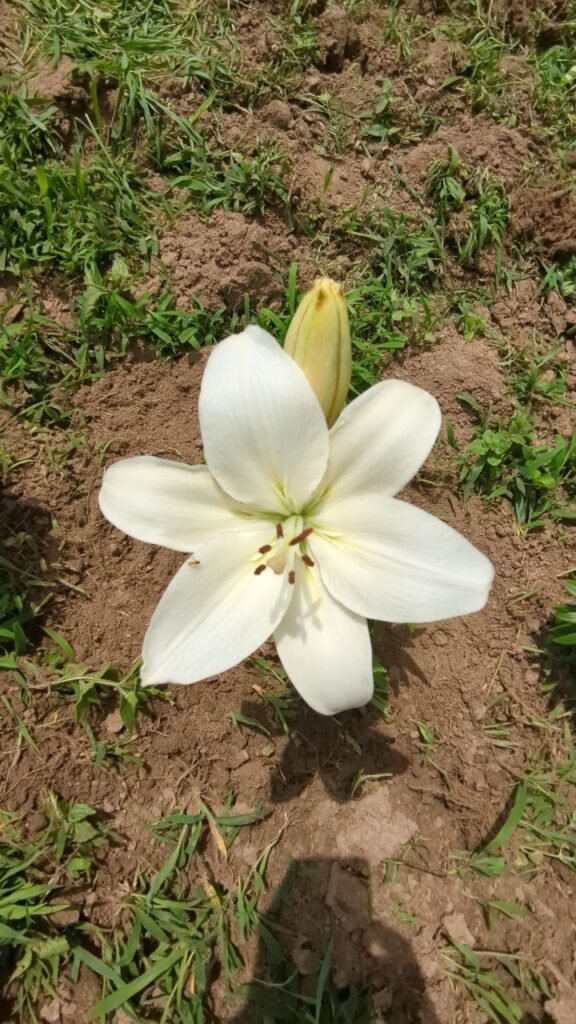
Mexican Sunflowers (Tithonia)
Mexican Sunflowers are annuals that have red and orange flowers which bloom from mid-summer through fall. They can grow from 3 to 8 feet tall. Seeds are planted 2 weeks after the last spring frost.

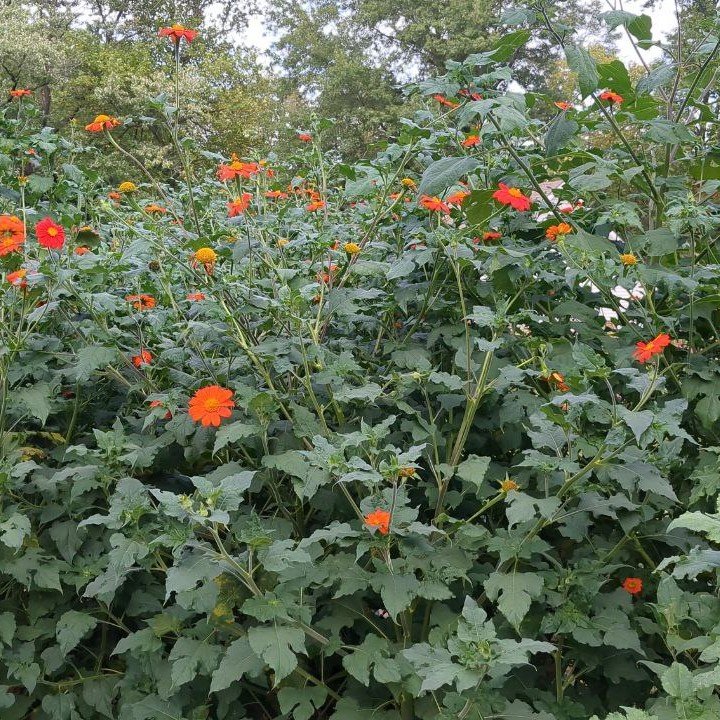
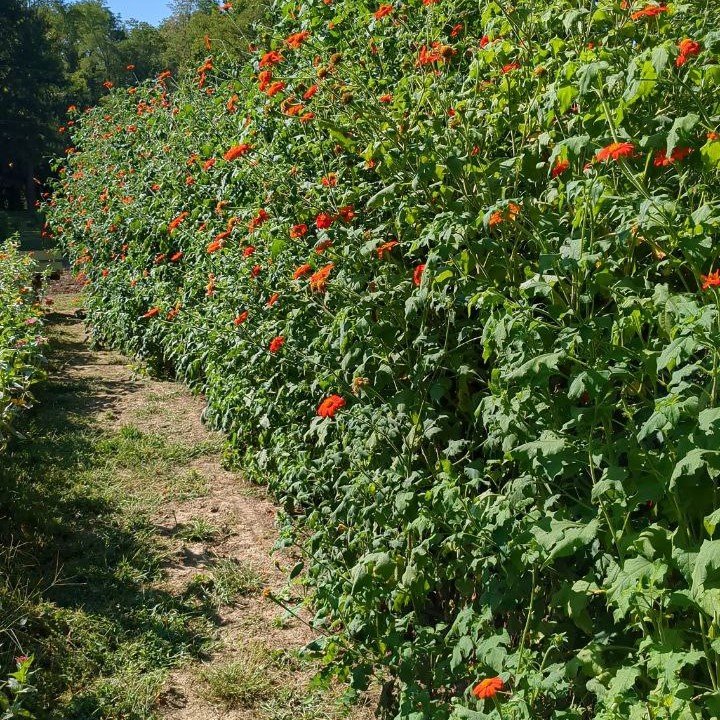
Orlaya (White Lace Flower)
Orlaya grandiflora, or White Lace Flower, is a cool season annual that is planted in the fall or in very early spring. It looks like Queen Anne’s Lace, Ammi and Daucus. It blooms in early May on our Farm.
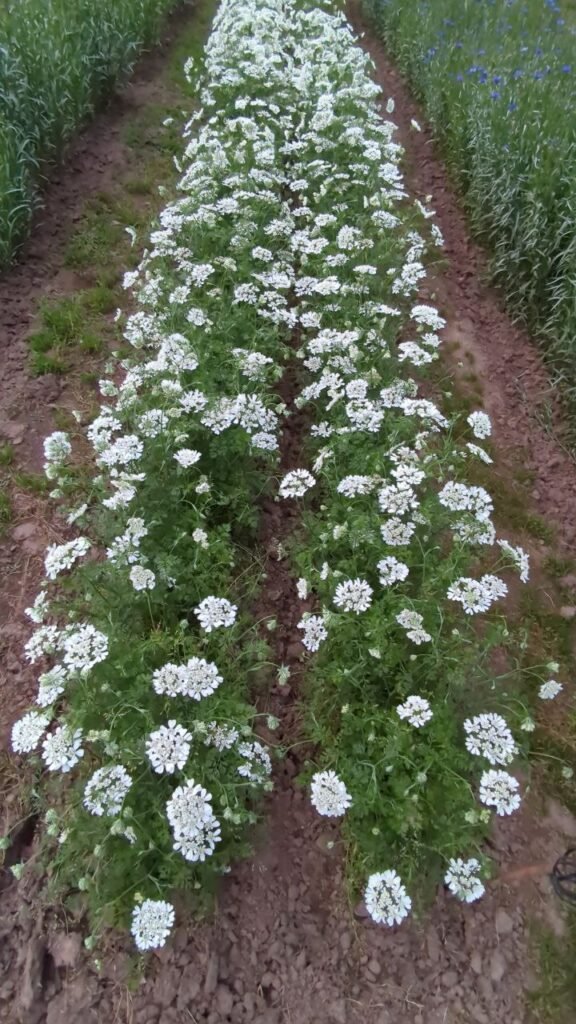



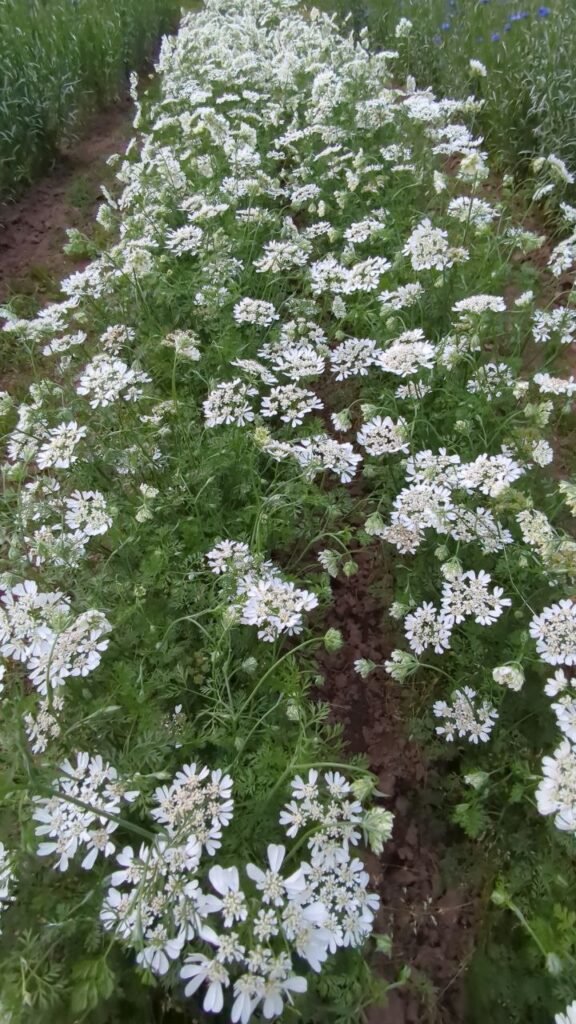
Peonies
Peonies are perennial flowers that bloom in early spring on our Farm, usually around Mother’s Day in May. Peonies are often used in wedding bouquets due to their stunning beauty and association with romance. Be aware that Peonies are mildly toxic to animals.











Rudbeckia (Black-Eyed Susan)
Rudbeckia is a perennial flower that is a common native Missouri wildflower. It grows 2 to 3 feet tall and blooms from June to September. Bees, butterflies and birds are attracted to these flowers. It can be grown as an annual or a perennial, as it is winter hardy in USDA zones 3 to 9.

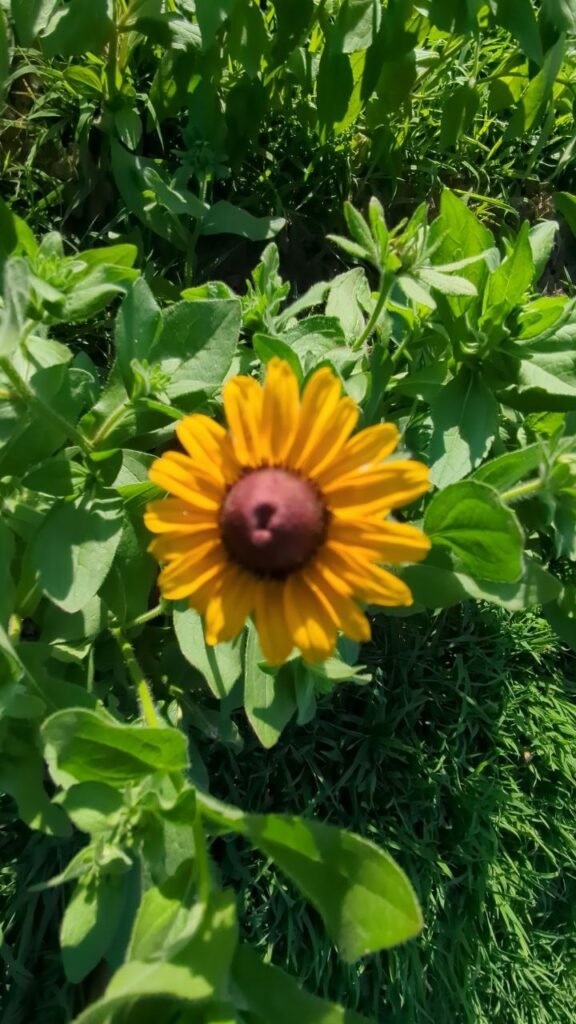
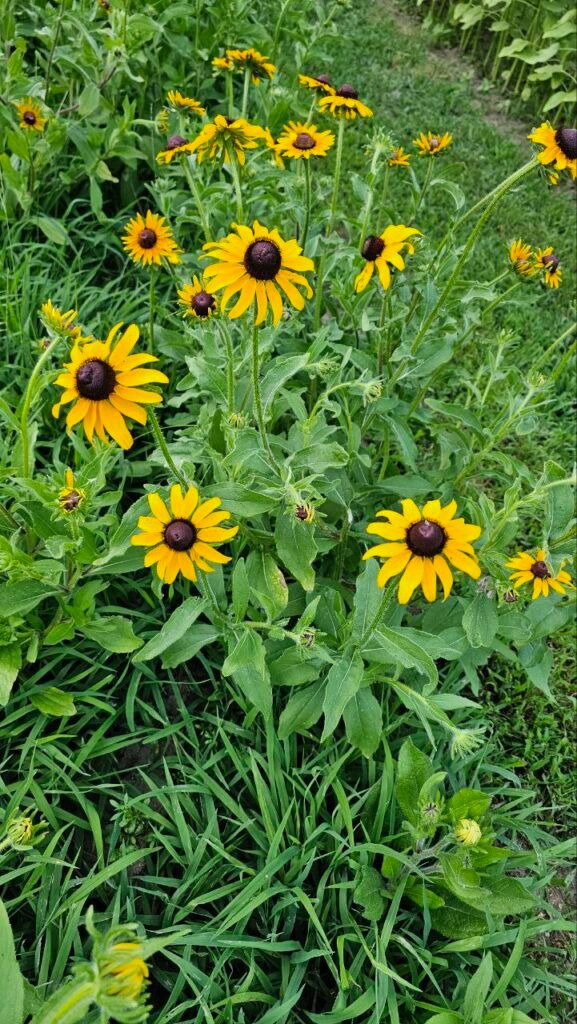

Sunflowers
Sunflowers are annuals that we plant after the last spring frost, and then succession plant every 2 weeks through July. Sunflowers can be branching (multiple flowers) or single stem (one flower). Seeds germinate in 7 to 14 days after planting and bloom around 60 days later. Sunflower plants actually rotate throughout the day so that the bloom is always facing the sun, so in the morning they face East and in the evening they face West. Sunflowers only last for about 2 weeks after they bloom.
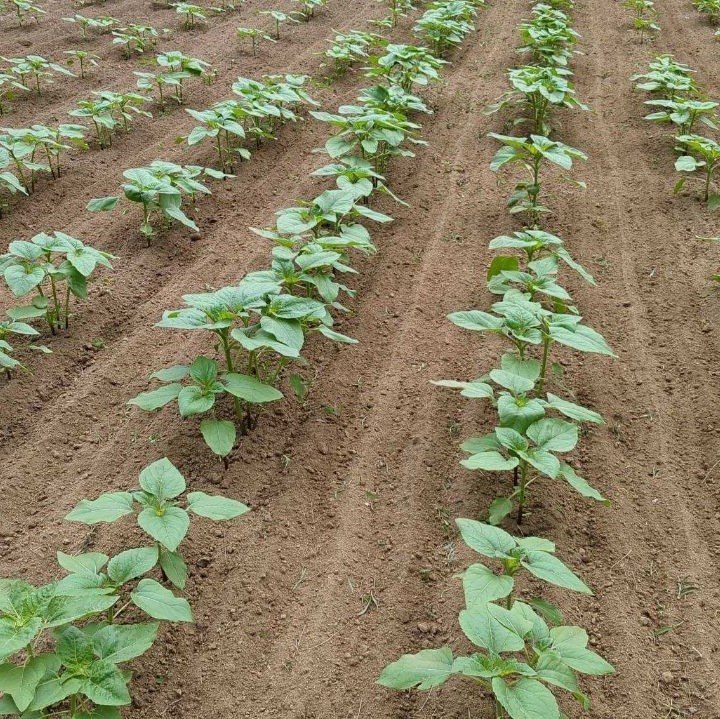
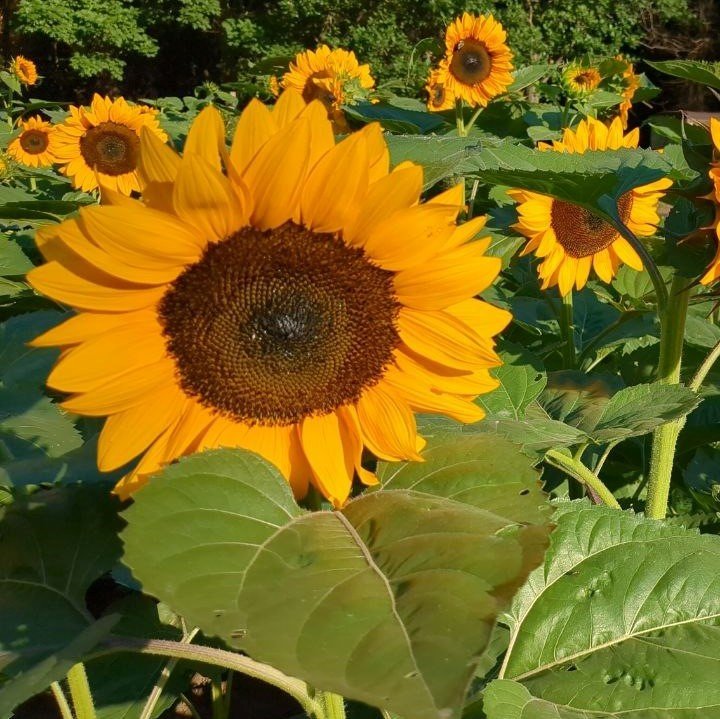
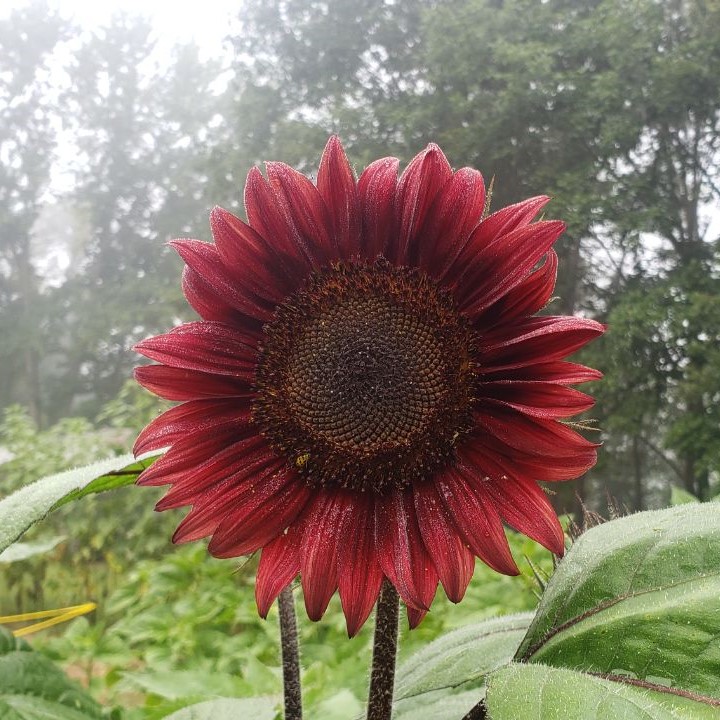


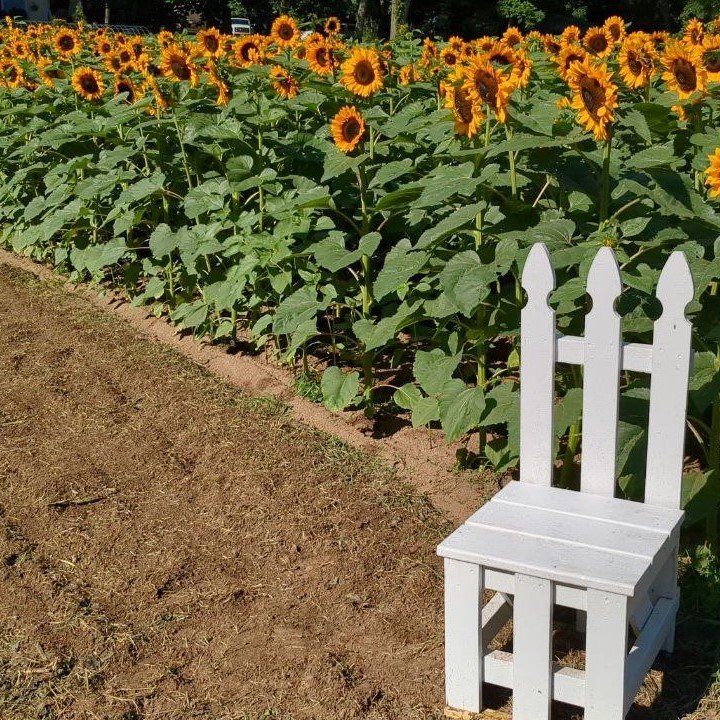

Sunflowers (Teddy Bear)
Teddy Bear Sunflowers are a branching sunflower that are fluffy and double-petaled. They have a unique look and are a favorite for many.

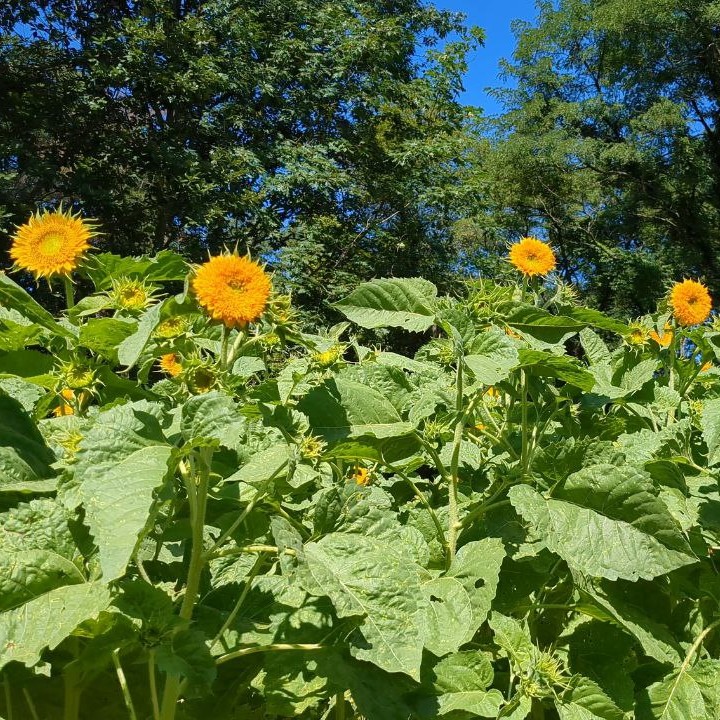
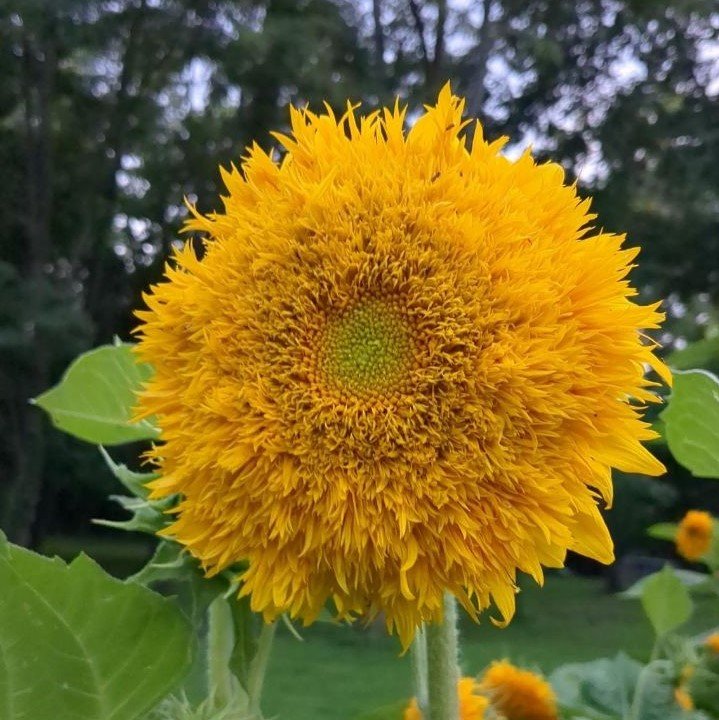
Tulips
Tulips are beautiful spring flowers that are grown from bulbs planted in the fall. Tulips are generally treated as annuals since they bloom so poorly in their second and third year. Originally from the country of Turkey, Tulips were introduced to Europe in the 1570’s. Tulips became especially popular in Holland in the 1600’s during a time known as “Tulip Mania.” Today Holland is the largest tulip producer in the world, with an estimated 3 billion tulip bulbs exported each year. On our Farm, Tulips are generally ready to pick in mid-April.




Zinnias
Zinnias are annuals planted in the spring after the last frost, and then succession planted every few weeks through July. The seeds germinate in 7 to 10 days and the flowers bloom 60 to 70 days after germination. We use the Benary Giant mix which has vibrant colors of pink, red, orange, purple, yellow, green and white.
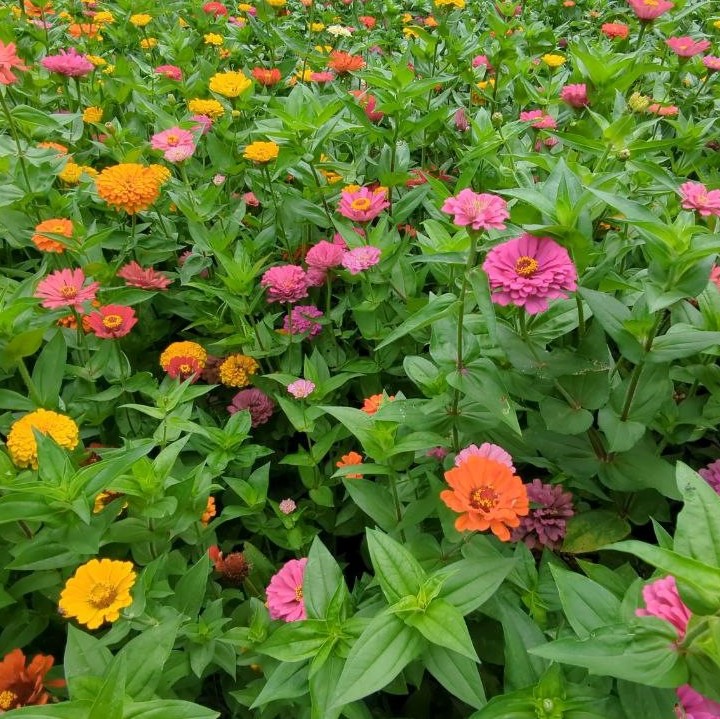
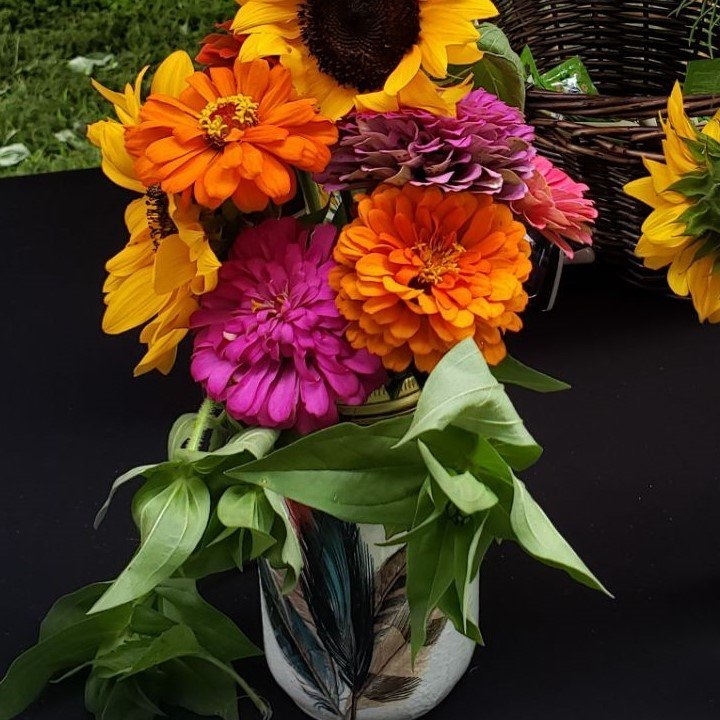


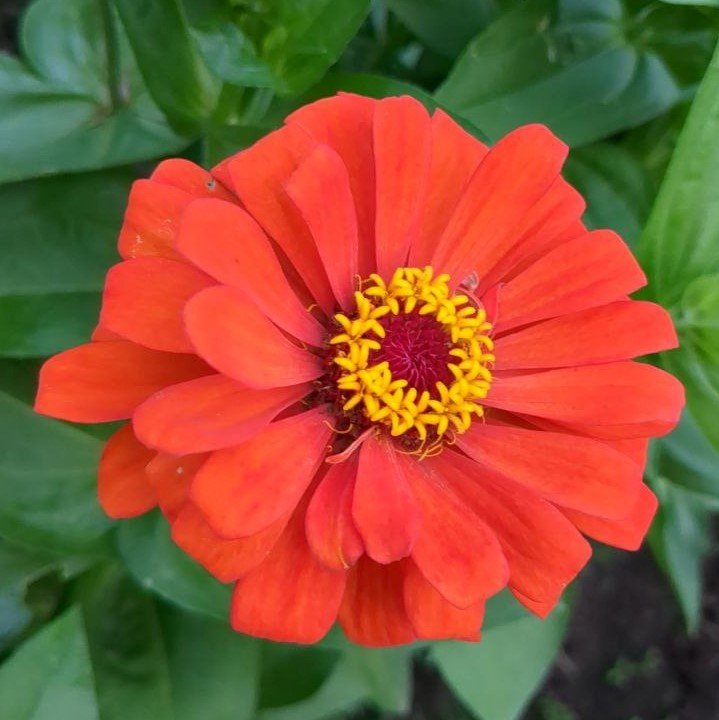

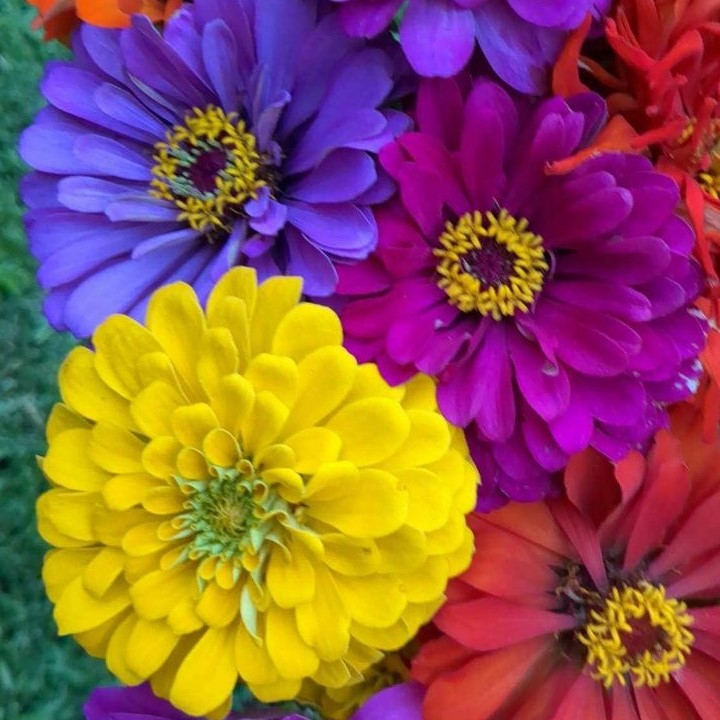

Fun Fact: Did you know that 40% of the world’s flower trade comes from the Netherlands? The Netherlands has been at the heart of the global cut flower trade for over 200 years. In the US, tulips are the most popular cut flower.
